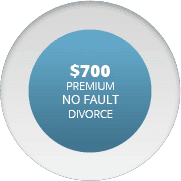How Many Times Can I File for Bankruptcy?
The goal of filing for bankruptcy is twofold: get out from under insurmountable debt and get a fresh start on financial stability. Unfortunately, not everybody succeeds in that second part. In fact, a study found that 8% of people who file for bankruptcy eventually file a second time around. Though you can file for bankruptcy protection as many times as you need to (and qualify), the Bankruptcy Code does impose a minimum amount of time that must pass between filings, with those thresholds dependent upon the type of bankruptcy you originally filed for and the type you want to file for next. These minimums are designed to prevent consumers from turning to bankruptcy as an invitation to take on dischargeable credit card debt.
The first thing you need to understand is that there are two different types of bankruptcy that individuals can file for — Chapter 7 and Chapter 13. A debtor only qualifies for Chapter 7 bankruptcy if they are able to show that they do not have enough income to be able to pay off their debts. Under Chapter 7 credit card debts, medical debts, and other dischargeable debts are eliminated entirely, with no further payment required. Your assets may be liquidated in order to pay off some of your creditors.
By contrast, a Chapter 13 bankruptcy creates a repayment plan, modifying the terms of the original debt in terms of the amount owed, interest owed, or amount of time you can take to pay off the debt. You won’t lose any assets because you create a new plan under which you eventually pay your creditors back.
If your original bankruptcy was filed under Chapter 7 and you need to file for bankruptcy again, you have the option of filing for Chapter 13 bankruptcy four years after your Chapter 7 discharge or eight years for another Chapter 7 bankruptcy. This second option is the longest period of time required between bankruptcy filings, in part because both filings lead to a discharge of debt rather than any significant repayment on the part of the debtor. In some cases, an individual who files for Chapter 7 bankruptcy can also file a Chapter 13 bankruptcy immediately after their filing if they need to create a payment plan in order to pay off debts that are not dischargeable.
If your original bankruptcy was filed under Chapter 13, you can file a Chapter 7 bankruptcy claim in six years. This period can be waived if you have already met your original payment plan obligation and have paid your debts back in full. If you want to file for a second Chapter 13 bankruptcy you can do so two years after your original filing as long as you received a discharge for the first one. This rarely happens, as Chapter 13 repayment plans have a minimum length of three years, The only circumstance where this would occur would be if you paid your plan off early o encounter an unexpected hardship that essentially voids the original plan.
For more information on filing for bankruptcy, contact our experienced attorneys to set up a time for a consultation.









